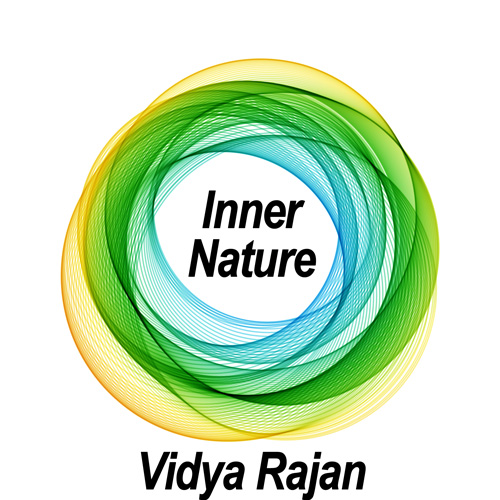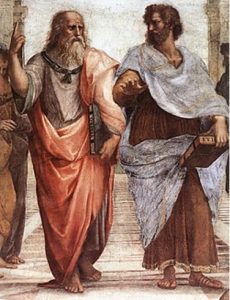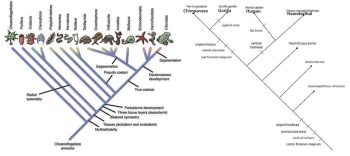By Vidya Rajan, Columnist, The Times
 The range of lifestyles, forms and patterns that characterize life are staggering in their variety, which rivets the eye and captures the imagination. In this article, I will look briefly at ways that humans have tried to organize life and capture both the similarities and differences.
The range of lifestyles, forms and patterns that characterize life are staggering in their variety, which rivets the eye and captures the imagination. In this article, I will look briefly at ways that humans have tried to organize life and capture both the similarities and differences.
The first documented person to attempt to classify life was Aristotle, student of Plato (Figure 1). Aristotle diverged from Plato’s teachings of abstract platonic forms that existed, separated from this imperfect world. Aristotle set up his own school of thought which emphasized empiricism and observation. He looked at the living forms around him and classified them into two categories: plants and animals. This method of grouping using morphological characteristics was simple, but efficient and well, wrong. But it was the first, with limited information, and Aristotle’s classification would hold for almost 2400 years, right up to the 1700’s.

Figure 1: Detail from Raphael’s painting “The School of Athens” with the older Plato on the left pointing upwards to a separate domain where perfect forms of this imperfect world existed; the younger Aristotle on the right points horizontally to indicate his philosophy of physicality as being grounded in this world. Image in the Public Domain.
In 1735, Carl Linnaeus (1709-1778) published his Systema Naturae, formalizing the taxonomic method of organizing levels of similarity from species (most similar and least inclusive) to kingdom (least similar and most inclusive). Linnaeus had deep knowledge of botany and medicine. He studied the methods of earlier taxonomists such Tournefort (who popularized the concept of genus which was invented by earlier taxonomists). Linnaeus also adopted the binomial system of classification – describing an animal with genus and species; for example, Tyrannosaurus (genus) and rex (species).
Linnaeus’ system was also long lived – it still exists in principle. But, in 1859, Charles Darwin posed a profound intellectual question: How do species originate? His explanation was adaptation to local conditions where selective pressures operate. As a simple example, flying animals have different physical and physiological adaptations than burrowing animals, because their parents passed down genes adapted to either flying or burrowing to their offspring. But Darwin could not explain how heredity worked. Within a hundred years, in 1953, James Watson and Francis Crick described the chemical structure of DNA which allows heredity to operate. A few years later, the two-times Nobel Prize winner, Frederick Sanger, described how to read the two molecules which underpin life, DNA and proteins, and molecular taxonomists took over the task of defining relationships.
Early, painstaking decoding of genomic and protein sequences have now been replaced by automated systems that can pump out information in a short time. Taxonomists had struck the mother lode. Soon, they were mining DNA sequences from anything that they could, and some things became clear. The most profound was that Darwin was right – that speciation happened due to environmental adaptation, and that all living things originated from a single progenitor, with modifications to genes underpinning changes to form and function. The second that the two ancient microscopic prokaryotes in existence, Bacteria and Archaea, were profoundly different from each other, but that they cooperated to create a eukaryotic cell – the type of cells that make up animals, plants, protists and fungi. The curious thing about the cooperation though, is that the majority of our cell and our DNA originate from Archaea, but our mitochondria are bacteria. Mitochondria power the cell, so having a power source within each cell was as transformative as electricity being available 24/7. The eukaryotic cell became so successful that its offspring* accumulated enough energy to grow in size and develop tissues – functional specializations – so that tasks such as respiration or movement could be parceled out in an animate division of labor. This ability to deploy specialized tissues made them much more efficient at fitting into the habitat than prokaryotes, which typically have a one-celled body.**
Now taxonomists look at these specializations, particularly at “derived traits” or “synapomorphies”, which represent the most transformative ones, that caused profound changes leading to new phyla or those causing smaller changes (Figure 2).

Figure 2: Cladograms of the relationships of animals listing the “derived traits” (also known as synapomorphies) that gave rise to animal phyla (left) and great apes (right). All great apes lack long tails; chimpanzees, gorillas and humans are extant, but the others are extinct. For both cladograms, time is on the Y axis with the most recent at the top and the most ancient at the bottom (not to scale). Figures are reproduced under fair use.
We are all kin. Would that we were kind.
*This is where Charles Darwin’s On the Origin of Species by Means of Natural Selection, or the Preservation of Favoured Races in the Struggle for Life comes in. Populations evolve over time, and many species can share a common ancestor. Sometimes that ancestor is well adapted enough that it thrives alongside too. For example, although chimps and humans share a common ancestor, that ancestor is extinct. But cyanobacteria, which were around about 3.8 billion years ago, remain unaltered, and are still going strong.
**As an analogy for prokaryotes, think of a one-room house where all the tasks of living – cooking, going to the toilet, and sleeping are conducted in the same room, versus eukaryotes who have a kitchen, toilet and bedroom in which to partition these activities more efficiently (and hygienically).
[1]. Siddika, A., Robin, Md.T.I and Usha, U.R. (2016) Constructing a Fully Ranked phylogenetic Constraint Tree using Monophyletic Group, Crown Group and Relative Age Constraints. IJSRSET162550 URL: https://www.researchgate.net/publication/314095464_IJSRSET162550_Constructing_a_Fully_Ranked_phylogenetic_Constraint_Tree_using_Monophyletic_Group_Crown_Group_and_Relative_Age_Constraints
[2]. Wikipedia Contributors (n.d.). File:Cladogram of Primate Evolution.jpg. Wikipedia.URL: https://en.wikipedia.org/wiki/File:Cladogram_of_Primate_Evolution.jpg




